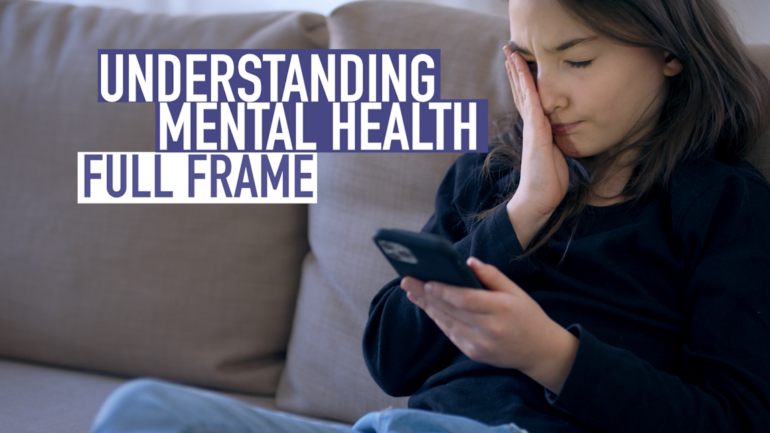The next global public health crisis?
Globally, stress, worry and sadness have all been on the rise in the past decade.The COVID-19 pandemic has made mental health issues worse. According to the World Health Organization, the pandemic triggered a 25 percent increase in the prevalence of anxiety and depression worldwide.
“I think these issues of depression, anxiety, social isolation, were just exacerbated by the pandemic,” said psychologist Dr. Alfiee Breland-Noble. “We then had this perfect storm, as I like to call it, of the amplification of these issues, the highlighting of these issues, as well as the exacerbation of these issues.”
Breland-Noble is the founder of the AAKOMA Project, a nonprofit with a mission to meet the mental health needs of young people of color. The organization offers workshops, virtual counseling and consulting.
Youth and young people of color experience barriers to accessing psychological care for reasons beyond economic disparities.
“People worry about how they’re going to be treated when they get into that mental health professional’s chair because there are different outcomes by different aspects of identity,” Breland-Noble said. “We also know that our research literature has not done the best job of developing interventions and understanding mental illness across all different types of populations.”
The AAKOMA Project is working with researchers and institutions to collect data about youth of color on mental health, which can help drive policy changes.
“We want to generate the knowledge to help us find the solutions so that everybody feels like they can see themselves in both the issues and in the solutions,” Breland-Noble said.
Coping with social anxiety
Anxiety disorders are the most common mental disorders worldwide, affecting about 300 million people, according to WHO. The good news is they’re also among the most treatable disorders.
“This is a fundamental misunderstanding about social anxiety. It is not about a preference. When we think about preference for socializing, it’s more akin to introversion … Anxiety is about a fear of the social interaction, a fear of the evaluation and rejection,” said Dr. Fallon Goodman, an assistant professor of psychology at the George Washington University and director of the Emotion and Resilience Laboratory.
Despite fearing these interactions, people dealing with social anxiety are still happier when they’re with other people socializing rather than when they’re alone.
“We, as humans, whether we like it or not, are social, interdependent creatures,” Goodman said.
Goodman offers some practical tips leading up to social interactions. One is to expect “you will not be perfect and you will mess up.” Also, she says to physically calm down the body by taking deep breaths.
“When you’re feeling socially anxious, we turn our spotlight inward. We think, Oh, how am I speaking? How am I sounding? What are they thinking? As best you can, focus your attention outward. What is the person doing with their eyes, their mouth, their ears, their nose? How can I focus on what they’re saying and not how I’m feeling?”
People do get better with exposure, practicing social skills, and challenging their thoughts, Goodman added.
“On the other side of that is a life that’s rich and filled with positive experiences and wonderful social relationships that can lead to a life that feels so much more full than a life of isolation or fearing those social relationships,” she said.
In the United States, more children die because of guns than car accidents or any other illness or injury. The TraRon Center is a Washington, D.C.-based nonprofit is providing a service that’s desperately needed now – they are helping young people process the pain and heal from their trauma.
“The Tra and Ron is Tracy and Ronnie, my sister Tracy, who was killed in 1993, my brother Ronnie, who was killed in 1996, and combining the first three letters of their name,” said founder Ryane Nickens. “I wanted a space as a memorial for my sister and brother that they would not be forgotten and that their names … would not be tied to how they died, but it would be tied to hope for another generation of people who grew up in the communities we grew up in.”
The TraRon Center provides counseling for adults, as well as after-school programs and therapy for children. Art is one tool to help the children process their emotions and communicate their needs.
“There are some kids that started off who would have emotional explosions … And now we’re able to get to a point where it’s like, OK, you’re dysregulated, and you’re also able to tell me why you’re dysregulated,” said Mariah Gray, art therapist at the TraRon Center.
“To be able to see those children come back to life, to be able to see those kids smile. I think that is the end game, that this space … teaches them how to use their voice, how to speak up for themselves, but also allows for them to be children, allows for them to just laugh, cry, when they need to express themselves in the ways that they need to express themselves, that this space is their refuge,” Nickens said.
 CGTN America
CGTN America
